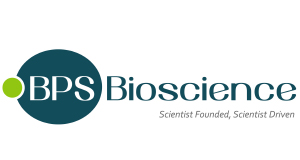MAGE-A1 TCR CD8+ NFAT-Luciferase Reporter Jurkat Cell Line
MAGE-A1 TCR CD8+ NFAT-Luciferase Reporter Jurkat Cell Line
SKU
BPS78993
Packaging Unit
2 vials
Manufacturer
BPS Bioscience
Availability:
loading...
Price is loading...
Products from BPS Bioscience require a minimum order value above 400€
Application: Design and optimize co-culture bioassays for MAGE-A1-specific TCR cell evaluation.Use as a positive control in experiments evaluating MAGE-A1 TCR cells.Use as an in vitro system to measure vaccine T-cell immunogenicity.
Background: MAGE (melanoma associated antigen) proteins are CT (cancer testis) antigens, and there are about 60 proteins in the MAGE family that can be subdivided into type I (present only on the X-chromosome, MAGE-A, B, and C) and type II (MAGE D-L and necdin). Under normal conditions they are mostly found in the testis and placenta. They are found at high levels in several cancer types, such as melanoma, brain, and breast cancer, and are involved in the development of resistance to chemotherapy, cell motility, and cell survival. Expression of MAGE proteins tend to correlate with a poor prognosis. They are intracellular proteins, with MAGE-A1 being mostly cytosolic, making them poor targets for strategies such as CAR-T cell therapy. MAGE proteins are degraded in the proteosome, and the peptides created can then be found on the cell membrane in combination with MHC (major histocompatibility complex) I. The presentation on the cell surface in this form makes them an attractive target for TCR (T cell receptor)-T cell therapy. Several clinical trials are ongoing, and either alone or in combination with other forms of cancer therapy the use of TCR-T cells targeting MAGE-A antigens may become a promising therapeutical avenue.CD8 (Cluster of Differentiation 8) is a co-receptor of TCR and a typical marker of cytotoxic T cells. The TCR protein complex is found on the surface of T cells and is responsible for recognizing antigens bound to MHC (Major Histocompatibility Complex) molecules. Stimulation of the TCR results in activation of downstream NFAT (Nuclear factor of Activated T-cells) transcription factors that induce the expression of various cytokines such as interleukin-2 to 4, and TNF-alpha. The use of engineered TCR allows T cells to target specific antigens present in cancer cells via the MHC, expanding the portfolio of antigens that can be targeted in cancer cell therapy.
Description: MAGE-A1 CD8+ NFAT-Luciferase Reporter Jurkat Cell Line was generated from T Cell Receptor (TCR) Knockout NFAT Luciferase Reporter Jurkat Cell Line (BPS Bioscience #78556) by overexpression of human CD8 (NM_001768.6) and MAGE-A1 (Melanoma-associated antigen 1) TCR using lentiviral transduction (with CD8a Lentivirus #78648 and MAGE-A1-Specific TCR Lentivirus #78934). This human MAGE-A1 TCR specifically recognizes antigen MAGE-A1 peptide, amino acids 278-286 (KVLEYVIKV). Figure 1: Illustration of the functional co-culture assay used to validate the MAGE-A1 TCR CD8+ NFAT-Luciferase Reporter Jurkat Cell Line.
Figure 1: Illustration of the functional co-culture assay used to validate the MAGE-A1 TCR CD8+ NFAT-Luciferase Reporter Jurkat Cell Line.
Host Cell Line: Jurkat (clone E6-1)
Mycoplasma Testing: The cell line has been screened to confirm the absence of Mycoplasma species.
Storage Stability: Cells are shipped in dry ice and should immediately be thawed or stored in liquid nitrogen upon receipt. Do not use a -80°C freezer for long term storage. Contact technical support at support@bpsbioscience.com if the cells are not frozen in dry ice upon arrival.
Supplied As: Each vial contains ˃1 x 106 cells in 1 ml of Cell Freezing Medium (BPS Bioscience #79796)
Uniprot: P43355
Warnings: Avoid freeze/thaw cycles
Biosafety Level: BSL-1
Application: Design and optimize co-culture bioassays for MAGE-A1-specific TCR cell evaluation.Use as a positive control in experiments evaluating MAGE-A1 TCR cells.Use as an in vitro system to measure vaccine T-cell immunogenicity.
Background: MAGE (melanoma associated antigen) proteins are CT (cancer testis) antigens, and there are about 60 proteins in the MAGE family that can be subdivided into type I (present only on the X-chromosome, MAGE-A, B, and C) and type II (MAGE D-L and necdin). Under normal conditions they are mostly found in the testis and placenta. They are found at high levels in several cancer types, such as melanoma, brain, and breast cancer, and are involved in the development of resistance to chemotherapy, cell motility, and cell survival. Expression of MAGE proteins tend to correlate with a poor prognosis. They are intracellular proteins, with MAGE-A1 being mostly cytosolic, making them poor targets for strategies such as CAR-T cell therapy. MAGE proteins are degraded in the proteosome, and the peptides created can then be found on the cell membrane in combination with MHC (major histocompatibility complex) I. The presentation on the cell surface in this form makes them an attractive target for TCR (T cell receptor)-T cell therapy. Several clinical trials are ongoing, and either alone or in combination with other forms of cancer therapy the use of TCR-T cells targeting MAGE-A antigens may become a promising therapeutical avenue.CD8 (Cluster of Differentiation 8) is a co-receptor of TCR and a typical marker of cytotoxic T cells. The TCR protein complex is found on the surface of T cells and is responsible for recognizing antigens bound to MHC (Major Histocompatibility Complex) molecules. Stimulation of the TCR results in activation of downstream NFAT (Nuclear factor of Activated T-cells) transcription factors that induce the expression of various cytokines such as interleukin-2 to 4, and TNF-alpha. The use of engineered TCR allows T cells to target specific antigens present in cancer cells via the MHC, expanding the portfolio of antigens that can be targeted in cancer cell therapy.
Description: MAGE-A1 CD8+ NFAT-Luciferase Reporter Jurkat Cell Line was generated from T Cell Receptor (TCR) Knockout NFAT Luciferase Reporter Jurkat Cell Line (BPS Bioscience #78556) by overexpression of human CD8 (NM_001768.6) and MAGE-A1 (Melanoma-associated antigen 1) TCR using lentiviral transduction (with CD8a Lentivirus #78648 and MAGE-A1-Specific TCR Lentivirus #78934). This human MAGE-A1 TCR specifically recognizes antigen MAGE-A1 peptide, amino acids 278-286 (KVLEYVIKV).
 Figure 1: Illustration of the functional co-culture assay used to validate the MAGE-A1 TCR CD8+ NFAT-Luciferase Reporter Jurkat Cell Line.
Figure 1: Illustration of the functional co-culture assay used to validate the MAGE-A1 TCR CD8+ NFAT-Luciferase Reporter Jurkat Cell Line. Host Cell Line: Jurkat (clone E6-1)
Mycoplasma Testing: The cell line has been screened to confirm the absence of Mycoplasma species.
Storage Stability: Cells are shipped in dry ice and should immediately be thawed or stored in liquid nitrogen upon receipt. Do not use a -80°C freezer for long term storage. Contact technical support at support@bpsbioscience.com if the cells are not frozen in dry ice upon arrival.
Supplied As: Each vial contains ˃1 x 106 cells in 1 ml of Cell Freezing Medium (BPS Bioscience #79796)
Uniprot: P43355
Warnings: Avoid freeze/thaw cycles
Biosafety Level: BSL-1
| SKU | BPS78993 |
|---|---|
| Manufacturer | BPS Bioscience |
| Manufacturer SKU | 78993 |
| Package Unit | 2 vials |
| Quantity Unit | PAK |
| Host | Human |
| Product information (PDF) |
|
| MSDS (PDF) |
|

 Deutsch
Deutsch






